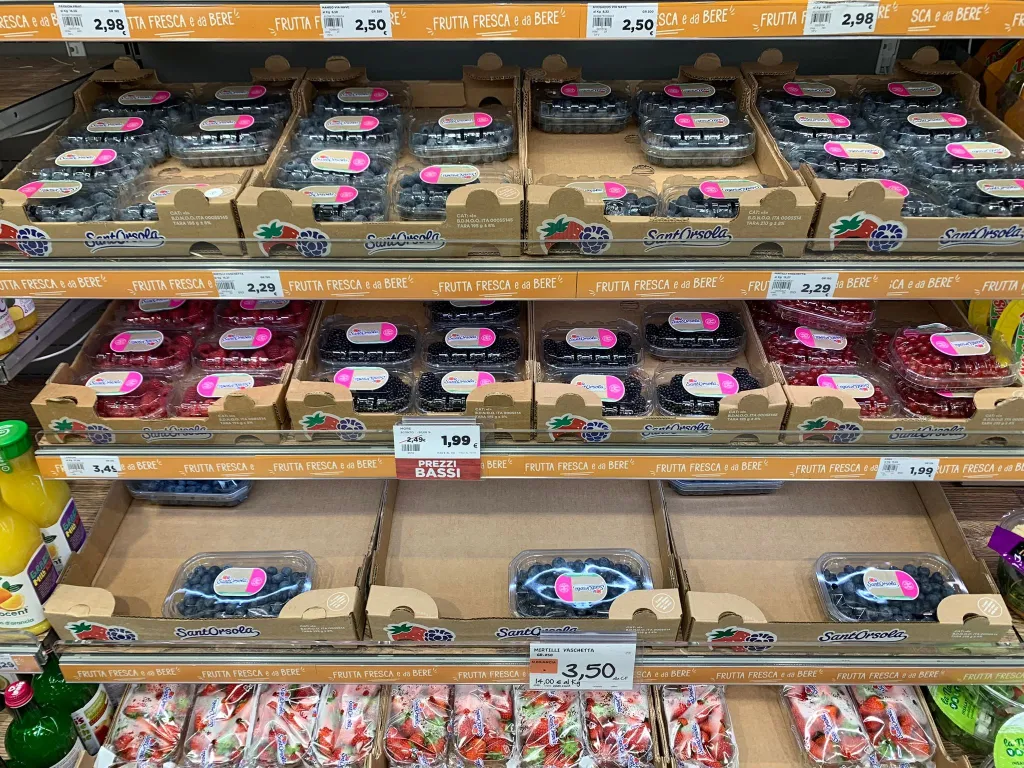In many mountainous areas of northern Italy blueberry is still better known in its wild type than in its cultivated form. The wild blueberry (Vaccinium myrtillus) is in fact a plant that grows wild on the slopes of the highest mountains in the northern Apennines and throughout the Alps.
The cultivated blueberry (Vaccinium corymbosum) is a cultivated plant. It is called also American blueberry because it is native to North America (Canada and the United States) and giant because of its size, much larger than the wild blueberry.
They are both of the genus Vaccinium, plants of the Ericaceae family which produce fruits called blueberries. The blueberries are generally small shrubs or creeping plants, but there are types of Vaccinium that are small trees that can reach heights of several metres.
While all the blueberries in the supermarket are cultivated blueberries, to find fresh wild blueberries you need to pick them yourself or buy them in the shops in the mountains during the season.
THE CHARACTERISTICS OF THE WILD BLUEBERRY :
- is not intensive cultivation, but spontaneous;
- the fruits are small in size (6-8 mm, with a weight of 0.25 - 0.55 g per fruit), similar to small peas;
- ripening takes place from the end of July to August in northern Italy;
- conservation is limited, and ripening on the plants is very fast;
- has an intense red pulp for the presence of antiocians, flavonoids with antioxidant power;
- are mainly used for processing, jams, fruit juices, frozen for ice cream parlours;
- Due to the colouring properties of anthocyanins, wild blueberries stains teeth and tongue;
- contains very small seeds that can cause digestion difficulties;
- the fruits grow on a crawling plant and are picked with a rake or comb, then transported in a wooden jar that you carry on your shoulder;

- It grows at altitudes between 1500 and 2000 m a.s.l., suffers from summer drought and late spring frosts and can therefore show a very variable production from year to year;
- After harvesting it is cleaned of foliage and impurities that remain in the rake;
- prices back to harvesters are about Eur 4.50/5.00 per kg, while they are sold retail from Eur 7.00 to Eur 8.00 per kg, with peaks of Eur 10.00 / 12.00 per kg in years of scarcity;
- In many areas harvesting is regulated, often free but subject to administrative permission and a maximum quantity per collector.
The Chamber of Commerce of Modena, in collaboration with the GAL, the Parco Alto Appennino Modenese, and the area's Mountain Communities, has created the "Mirtillo nero dell'Appennino Modenese" (Black Bilberry of the Modena Apennines) protection brand , regulated by a special set of specifications.










